Adjustable Model of Renewable Energy Projects for Sustainable Development: A Case Study of the Nišava District in Serbia
Abstract
1. Introduction
2. Research Methodology
2.1. Case Study: Select RES for the Development of Projects in the Nišava District
2.2. External Factors, Internal Factors, and Quality Indicators of an RES Project
2.3. Multi-Criteria Decision Making—Fuzzy Analysis
2.4. Increasing the Degree of Energy Efficiency and Sustainable Development
3. Results Based on Performances Ranking for RES Projects
- the overall goal is identified and clearly defined
- the criteria and sub-criteria that contribute to the overall goal are identified
- the hierarchical structure is formed
- pairwise comparison is made using a fuzzified Saaty’s evaluation scale
- the priority weighting vectors are evaluated using the eigenvalue method, the fuzzy extent analysis, and the aggregation principle
- the defuzzification and the final ranking of performances are conducted.
4. Discussion
5. Conclusions
Acknowledgments
Author Contributions
Conflicts of Interest
References
- Golusin, M.; Tešić, Z.; Ostojić, A. The analysis of the renewable energy production sector in Serbia. Renew. Sustain. Energy Rev. 2010, 14, 1477–1483. [Google Scholar] [CrossRef]
- Energy Sector Development Strategy of the Republic of Serbia for the Period by 2025 with Projections by 2030; Republic of Serbia, Ministry of Mining and Energy: Belgrade, Serbia, 2016; pp. 7–58.
- Ristanović, M.; Banjac, M. Case study of Serbia. In Proceedings of the 7th International Forum on Energy for Sustainable Development International Conference on Renewable Energy, Regional Seminar, Baku, Azerbaijan, 18–21 October 2016; Available online: https://www.unece.org/.../energy/se/pp/...invest/CS_Serbia.pdf (accessed on 28 November 2017).
- Misak, S.; Prokop, L. Green Energy and Technology. In Operation Characteristics of Renewable Energy Sources; Chakraborty, S., Simoes, M.G., Kramer, W.E., Eds.; Springer International Publishing: Basel, Switzerland, 2017; ISBN 978-1-4471-5103-6. [Google Scholar]
- Pucar, M. Energy development aspects of settlements and climate change—Strategies and laws in Serbia. In Climate Change and the Built Environment: Policies and Practice in Scotland and Serbia, Monograph, 2013, Special 70th ed.; Pucar, M., Dimitrijević, B., Marić, I., Eds.; Institute for Architecture and Urban Planning of Serbia (IAUS): Belgrade, Serbian, 2013; pp. 57–109. ISBN 978-86-80329-72-7. (In Serbian) [Google Scholar]
- Leković, V. Institutional aspects of economic and social modernization: sustainable development strategies of the Republic of Serbia. In Economic and Social Aspects of Serbia Joining the EU; Jakšić, M., Stojanović Aleksić, V., Mimović, P., Eds.; Faculty of Economics, University of Kragujevac: Kragujevac, Serbia, 2015; pp. 49–64. ISBN 978-86-6091-059-4. (In Serbian) [Google Scholar]
- Vasić, M. The life cycle of the construction project. In Proceedings of the X Meeting of Businessmen and Scientists SPIN’15: Innovative Solutions for the Operational Management, Belgrade, Serbia, 5–6 November 2015; pp. 662–669. (In Serbian). [Google Scholar]
- Evans, A.; Strezov, V.; Evans, J.T. Assessment of sustainability indicators for renewable energy technologies. Renew. Sustain. Energy Rev. 2009, 13, 1082–1088. [Google Scholar] [CrossRef]
- Cvetković, V.; Prelević, D.; Schmid, S. Geology of South-Eastern Europe. In Mineral and Thermal Waters of Southeastern Europe; Papić, P., Ed.; Springer International Publishing: Zürich, Switzerland, 2016; ISBN 978-3-319-25377-0. [Google Scholar]
- Mihajlov, A. Fundamentals of Analytical Instruments in the Environmental Field. Ph.D. Thesis, Univerzitet Educons, Sremska Kamenica, Serbian, 2011. (In Serbian). [Google Scholar]
- Chaichana, C.; Wongsapai, W.; Damrongsak, D.; Ishihara, N.K.; Luangchosiri, N. Promoting Community Renewable Energy as a tool for Sustainable Development in Rural Areas of Thailand. In Proceedings of the 4th International Conference on Power and Energy Systems Engineering, CPESE 2017, Berlin, Germany, 25–29 September 2017. [Google Scholar]
- Obalola, T.F. Evaluation of the Effects of Project Environment on Project Performance in Lagos and Abuja. Ph.D. Thesis, Federal University Technology, Akure, Nigeria, 2006. [Google Scholar]
- Iyer, K.C.; Jha, K.N. Factors affecting cost performance: Evidence from Indian construction projects. Int. J. Project Manag. 2005, 23, 283–285. [Google Scholar] [CrossRef]
- Love, P.E.D.; Tse, R.Y.C.; Edwards, D.J. Time-cost relationship in Australian building construction projects. J. Constr. Eng. Manag. 2005, 131, 187–194. [Google Scholar] [CrossRef]
- Vuletić, G. The project management specifics in construction works. Monten. J. Econ. 2010, 6, 161–172. (In Serbian) [Google Scholar]
- Jaramillo-Nieves, L.; del Río, P. Contribution of Renewable Energy Sources to the Sustainable Development of Islands: An Overview of the Literature and a Research Agenda. Sustainability 2010, 2, 783–811. [Google Scholar] [CrossRef]
- Thomas, S.N.; Palaneeswaran, E.; Kumaraswamy, M.M. A dynamic e-reporting system for contractor’s performance appraisal. Adv. Eng. Softw. 2002, 33, 339–349. [Google Scholar]
- Vuković, M. Managing Energy Efficiency Projects. Tech. Manag. 2014, 64, 1450–9911. (In Serbian) [Google Scholar]
- Navon, R. Automated Project Performance Control (APPC) of construction resources. Autom. Constr. 2003, 78–81. [Google Scholar] [CrossRef]
- Ugwu, O.O.; Haupt, T.C. Key performance indicators and assessment methods for infrastructure sustainability—A South African construction industry perspective. Build. Environ. 2007, 42, 665–680. [Google Scholar] [CrossRef]
- Al-Hazim, N.; Salem, Z.A.; Ahmad, H. Delay and Cost Overrun in Infrastructure Projects in Jordan. Procedia Eng. 2017, 182, 18–24. [Google Scholar] [CrossRef]
- Del Rıo, P.; Burguillo, M. An empirical analysis of the impact of renewable energy deployment on local sustainability. Renew. Sustain. Energy Rev. 2009, 13, 1314–1325. [Google Scholar] [CrossRef]
- Ali Elhaniash, F.E.; Stevović, S. Measurement the efficiency of building project management. Economics 2016, 62, 129–140. [Google Scholar] [CrossRef]
- Samson, M.; Lema, N. Development of construction contractors performance measurement framework. In Proceedings of the First International Conference of Creating a Sustainable, Johannesburg, South Africa, 26 August–4 September 2002. [Google Scholar]
- Waas, T.; Hugé, J.; Block, T.; Wright, T.; Benitez-Capistros, F.; Verbruggen, A. Sustainability Assessment and Indicators: Tools in a Decision-Making Strategy for Sustainable Development. Sustainability 2014, 6, 5512–5534. [Google Scholar] [CrossRef]
- Matteo, U.D.; Pezzimenti, P.M.; Garcia, D.A. Methodological Proposal for Optimal Location of Emergency Operation Centers through Multi-Criteria Approach. Sustainability 2016, 8, 50. [Google Scholar] [CrossRef]
- Rossi, R.; Gastaldi, M.; Gecchele, G. Comparison of fuzzy-based and AHP methods in sustainability evaluation: A case of traffic pollution-reducing policies. Eur. Transp. Res. Rev. 2013, 5, 11–26. [Google Scholar] [CrossRef]
- Mohagheghi, V.; Mousavi, M.S.; Vahdani, B. A new multi-objective optimization approach for sustainable project portfolio selection: A real-world application under interval-valued fuzzy environment. Iran. J. Fuzzy Syst. 2016, 13, 41–68. [Google Scholar]
- Lamastra, L.; Balderacchi, M.; Di Guardo, A.; Monchiero, M.; Trevisan, M. A novel fuzzy expert system to assess the sustainability of the viticulture at the wine-estate scale. Middle-East J. Sci. Res. 2014, 22, 1411–1421. [Google Scholar] [CrossRef] [PubMed]
- Milosević, A.; Milošević, M.; Milošević, D.; Selimi, A. Ahp multi—Criteria method for sustainable development in construction. In Proceedings of the 4th International Conference, Contemporary Achievements in Civil Engineering, Subotica, Serbia, 22 April 2016; pp. 929–938. [Google Scholar] [CrossRef]
- Milošević, M.; Stanojević, A.; Milošević, A.; Milošević, D. Multi-criteria analysis of energy efficiency by AHP method in planning and architectural design. In Proceedings of the STEPGRAD2016, Banja Luka, Bosnia and Herzegovina, 18 February 2016; pp. 295–302. [Google Scholar]
- Milošević, M.; Milošević, A.; Milošević, D.; Stanojević, A.; Dimić, V. Multicriteria analysis of contemporary materials for energy-efficient buildings. In Proceedings of the SFERA2016, Mostar, Bosnia and Herzegovina, 2 October 2016; pp. 46–51. [Google Scholar]
- Milošević, M.; Milošević, D.; Dimić, V.; Stević, D.; Stanojević, A. The analysis of energy efficiency indicators and renewable energy sources for existing buildings. KOIEE 2017, 5, 205–212. [Google Scholar]
- Kulak, O.; Durmusoglu, B.; Kahraman, C. Fuzzy multi-attribute equipment selection based on information axiom. J. Mater. Process. Technol. 2005, 169, 337–345. [Google Scholar] [CrossRef]
- Vidadili, N.; Suleymanov, E.; Bulut, C.; Mahmudlu, C. Transition to renewable energy and sustainable energy development in Azerbaijan. Renew. Sustain. Energy Rev. 2017, 80, 1153–1161. [Google Scholar] [CrossRef]
- Srdjević, B.; Medeiros, Y. Fuzzy AHP assessment of water management plans. Water Resour. Manag. 2008, 22, 877–894. [Google Scholar] [CrossRef]
- Jilcha, K.; Berhan, E.; Kitaw, D. Occupational Safety and Health Improvement Factors Prioritization Using Fuzzy AHP for Manufacturing Industries; Geremew, S., Krishnan, V.S.R., Babu, R., Havinal, V., Eds.; ICAST2017; Faculty of Mechanical and Industrial Engineering, Bahir Dar Institute of Technology, Bahir Dar University: Bahir Dar, Ethiopia, May 2017; pp. 17–45. [Google Scholar]
- Liou, T.S.; Wang, M.J. Ranking fuzzy numbers with integral value. Fuzzy Sets Syst. 1992, 50, 247–256. [Google Scholar] [CrossRef]
- Chang, D.Y. Applications of the extent analysis method on fuzzy AHP. Eur. J. Oper. Res. 1996, 95, 649–655. [Google Scholar] [CrossRef]
- Zadeh, L.A. Fuzzy sets. Inf. Control 1965, 8, 338–353. [Google Scholar] [CrossRef]
- Youker, R. Managing the International Project Environment. Int. J. Project Manag. 1992, 10, 219–226. [Google Scholar] [CrossRef]
- Akinsola, A.O.; Potts, K.F.; Harris, F.C. Identification and evaluation of factors influencing variations on building project. Int. J. Project Manag. 1997, 15, 263–267. [Google Scholar] [CrossRef]
- Bai, L.; Li, Y.; Du, Q.; Xu, Y. A Fuzzy Comprehensive Evaluation Model for Sustainability Risk Evaluation of PPP Projects. Sustainability 2017, 9, 1890. [Google Scholar] [CrossRef]
- Pheng, L.S.; Chuan, Q.T. Environmental factors and work performance of project managers in the construction industry. Int. J. Project Manag. 2006, 24, 24–37. [Google Scholar] [CrossRef]
- Guo, R.; Wu, T. Mathematical Model for System Planning on Campus: A Case Study in Harbin Institute of Technology in China. In Mediterranean Green Buildings & Renewable Energy Selected Papers; Sayigh, A., Ed.; Springer International Publishing: Cham, Switzerland, 2015; pp. 589–599. ISBN 978-3-319-30746-6. [Google Scholar]
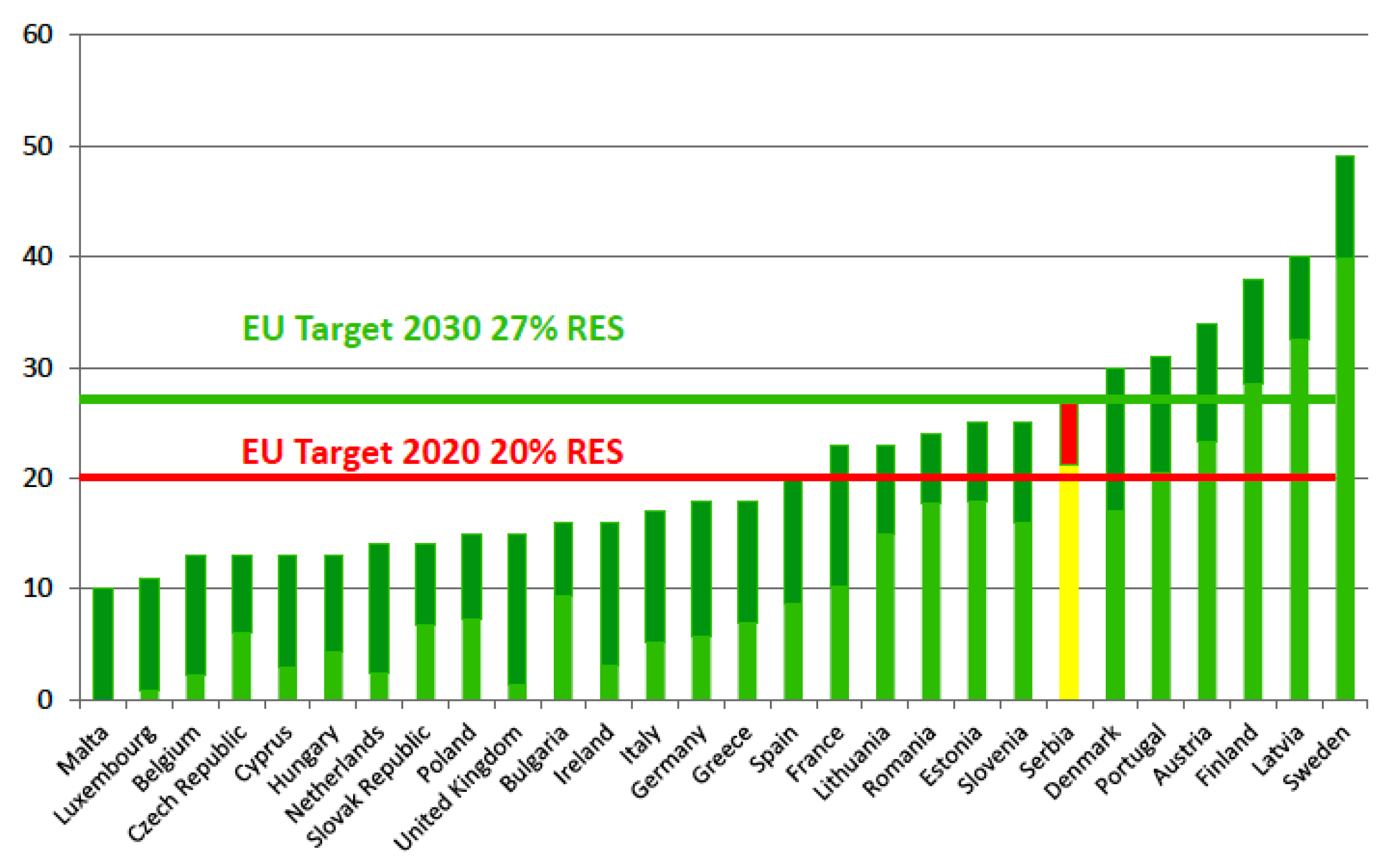
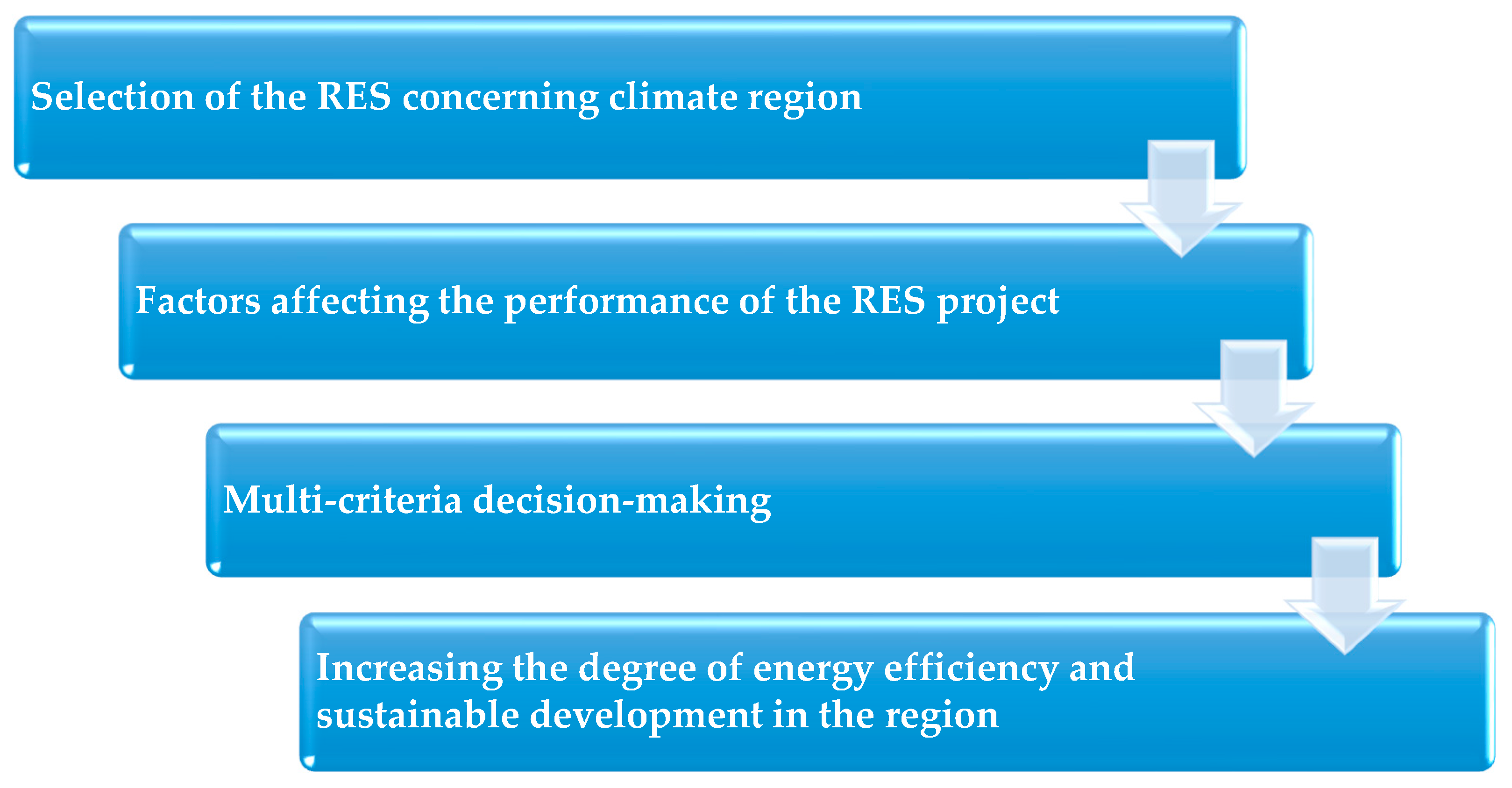
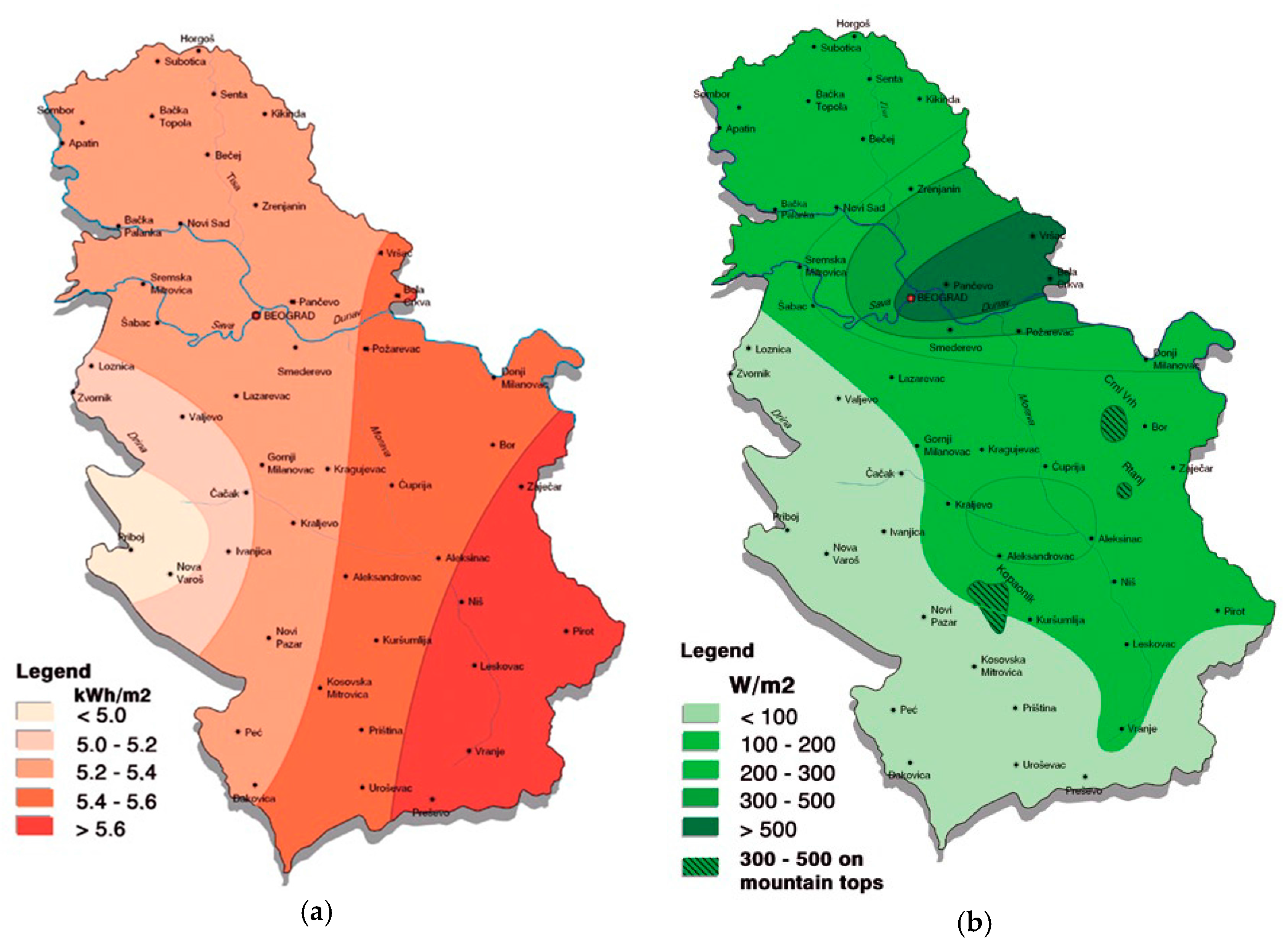
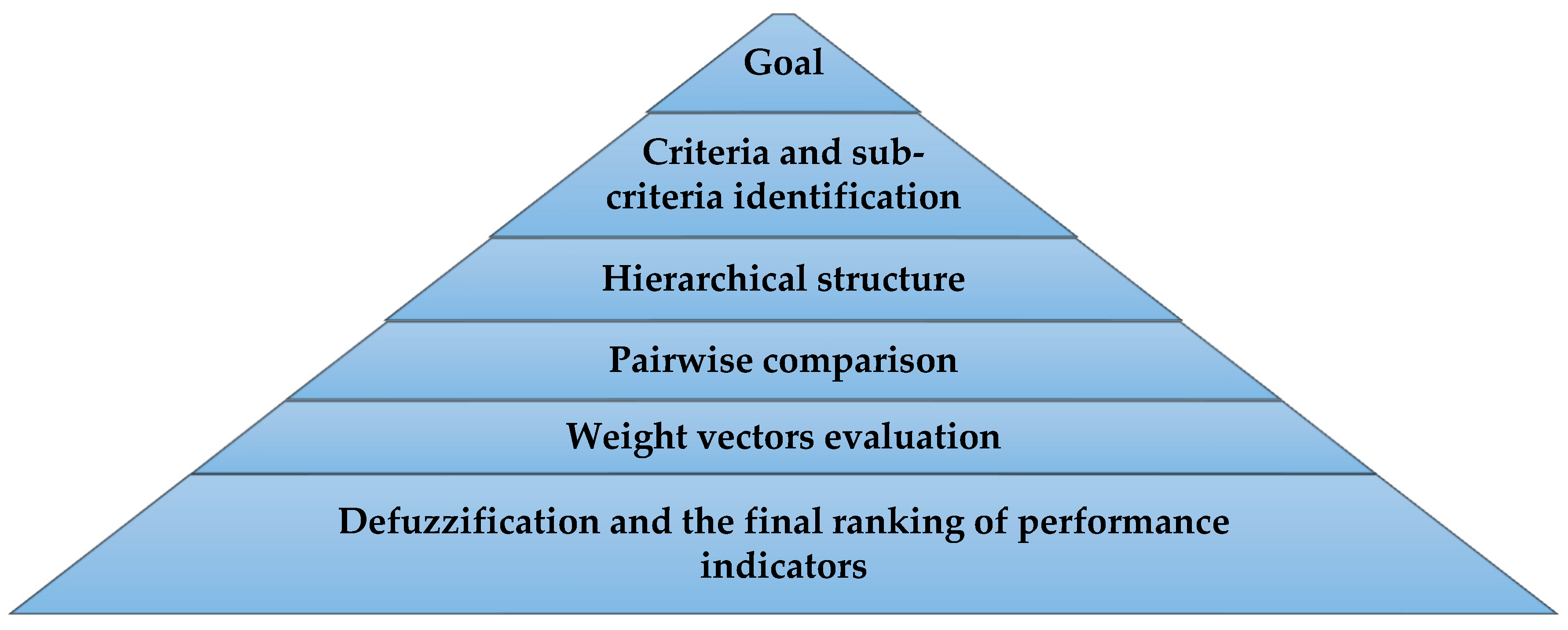
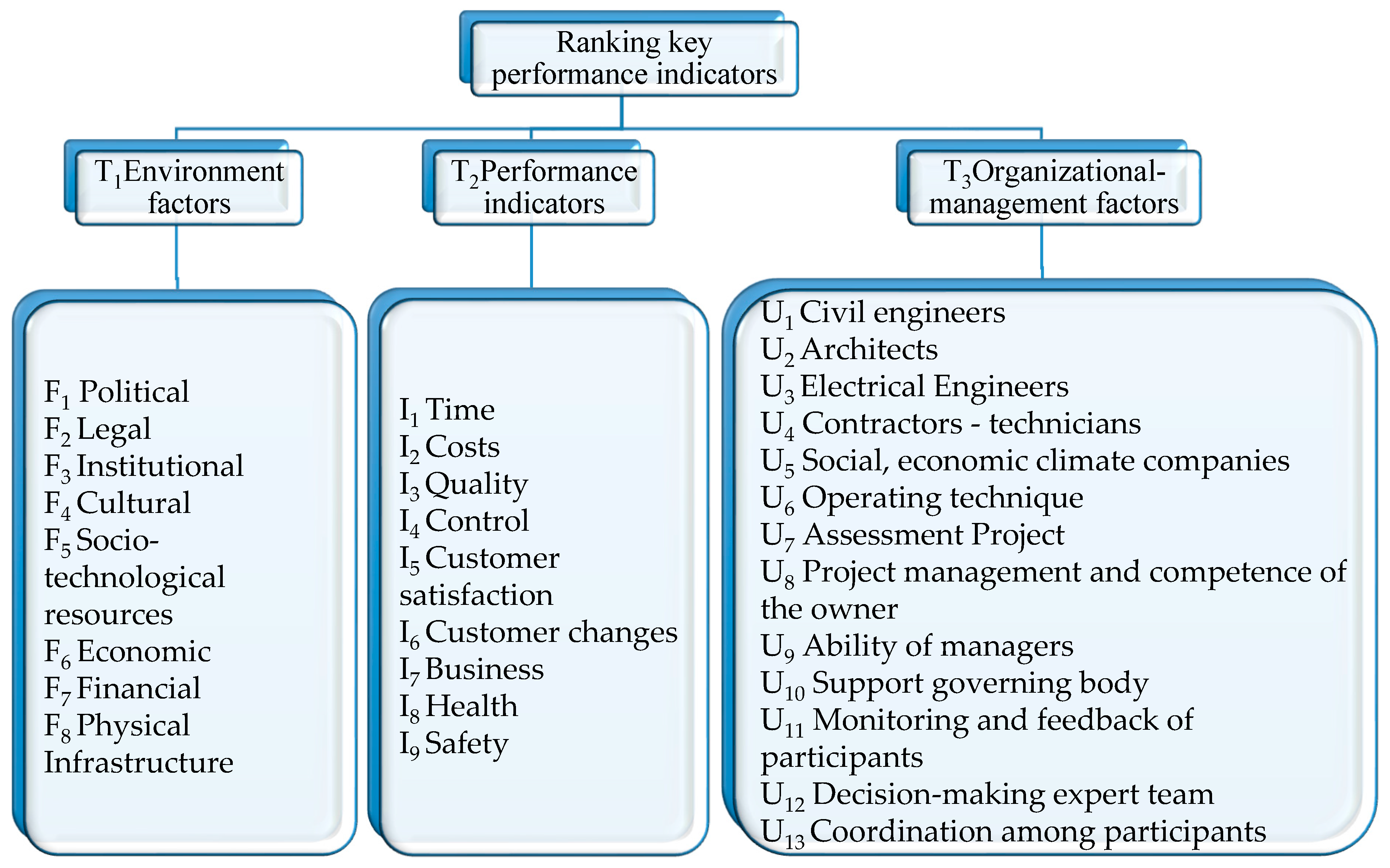
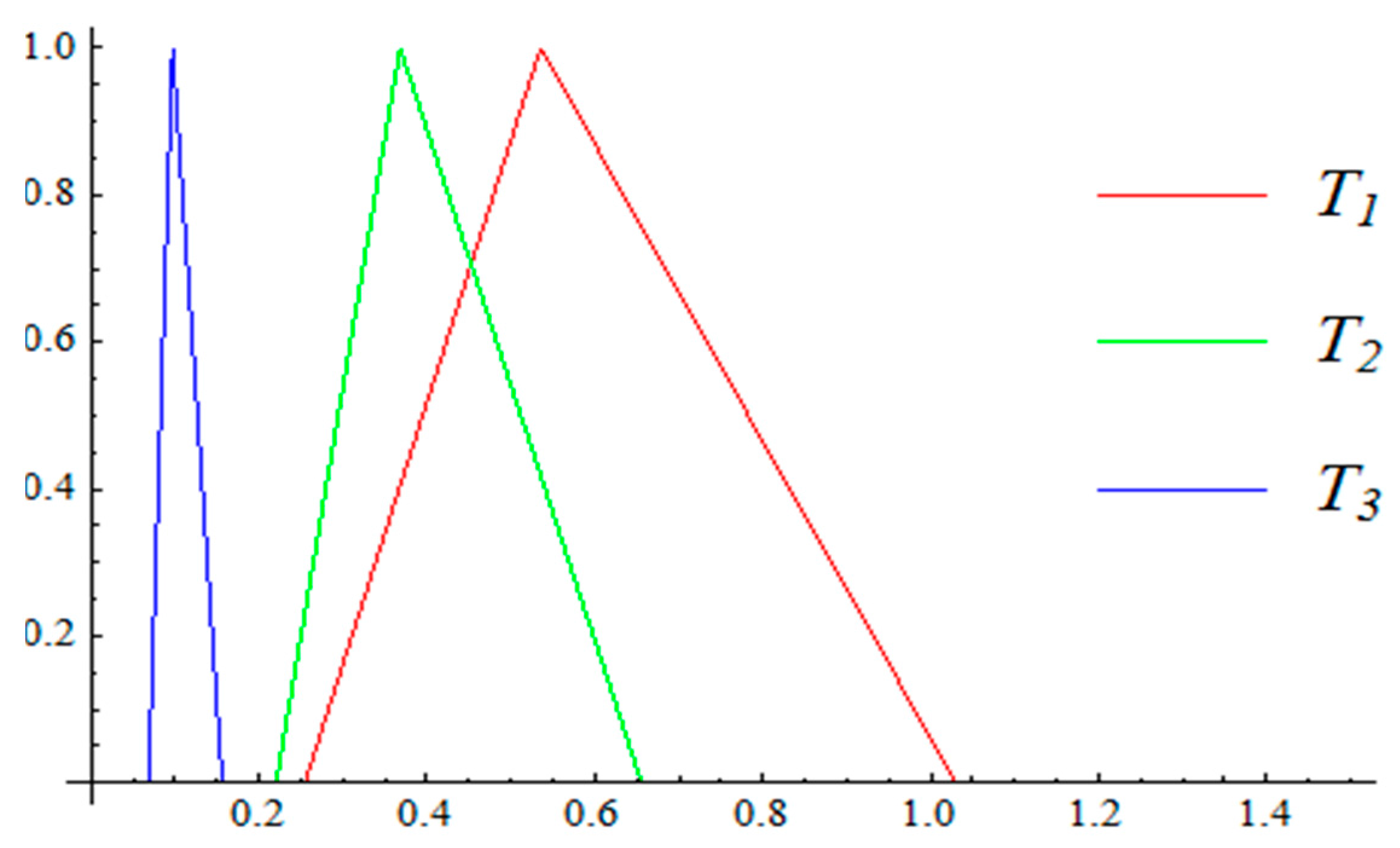
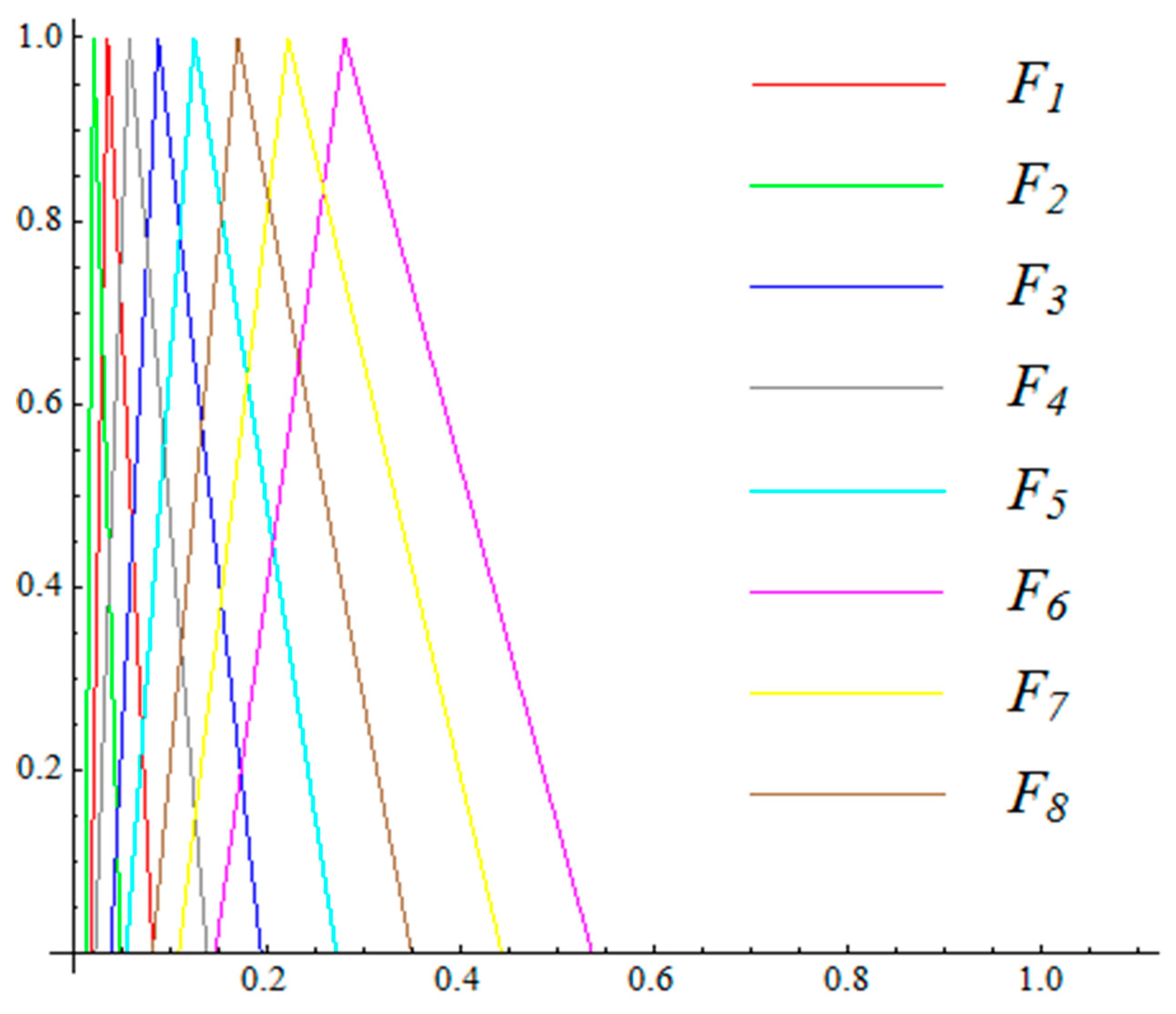

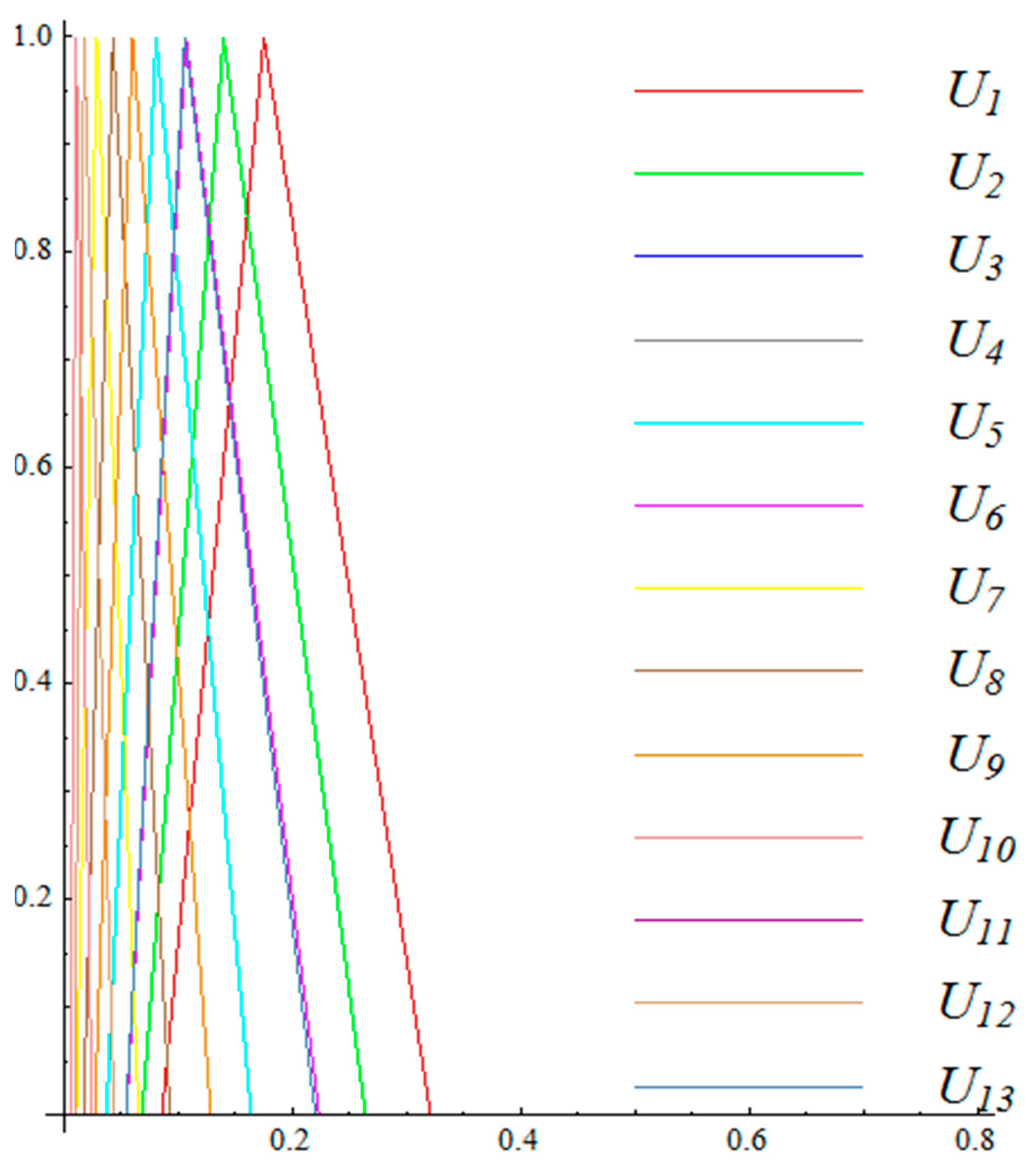
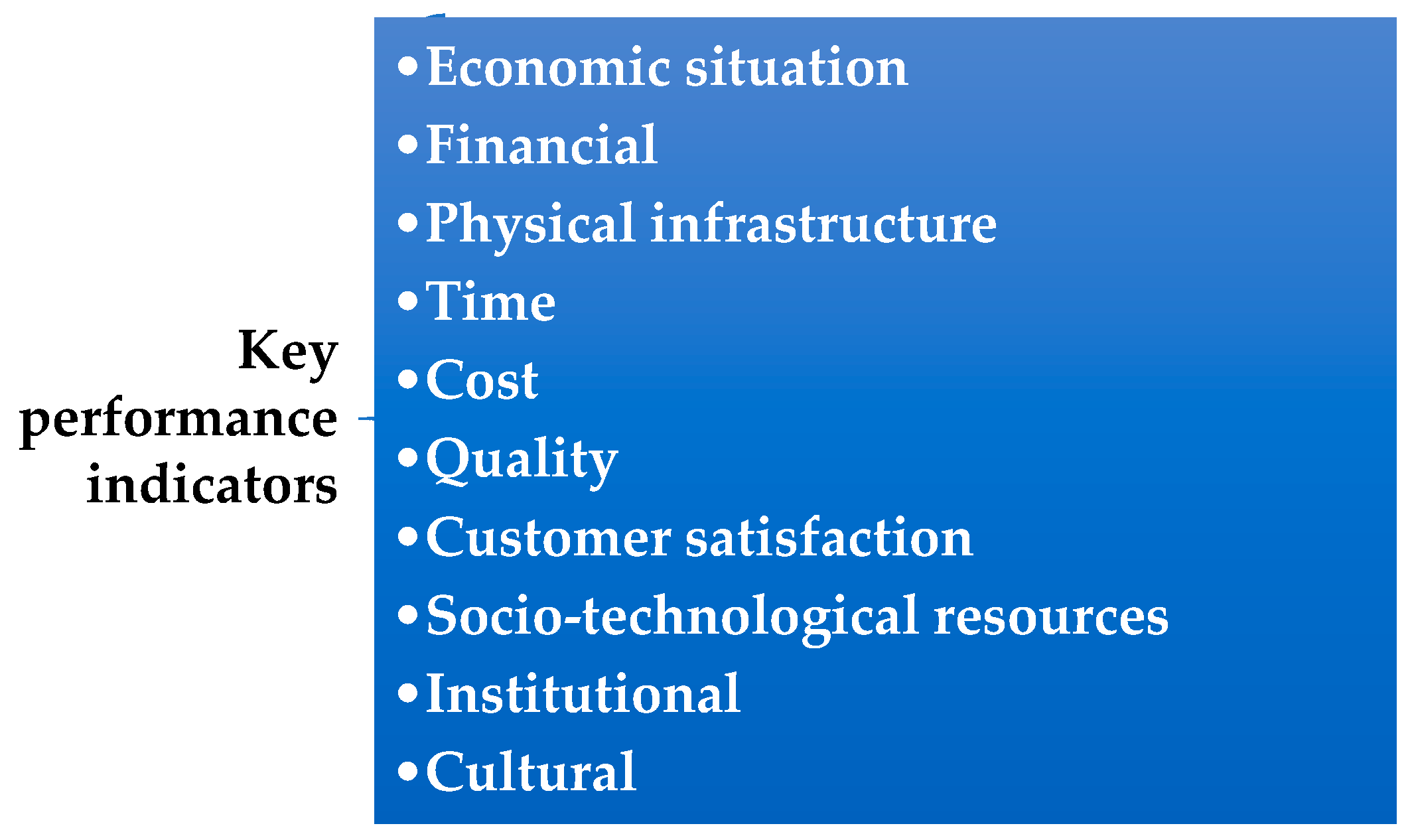
| Environmental Factors (T1): | Quality Indicators (T2): | Factors of Organizational Management (T3): |
|---|---|---|
| Political—F1 Legal—F2 Institutional—F3 Cultural—F4 Socio-technological resources—F5 Economic—F6 Financial—F7 Physical infrastructure—F8 | Time—I1 Costs—I2 Quality—I3 Control—I4 Customer satisfaction—I5 Customer changes—I6 Business—I7 Health—I8 Safety—I9 | Civil engineers—U1 Architects—U2 Electrical Engineers—U3 Contractors—technicians—U4 Social, economic climate companies—U5 Operating technique—U6 Assessment project—U7 Project management and competence of the owner—U8 Ability of managers—U9 Support governing body—U10 Monitoring and feedback—U11 Decision-making expert team—U12 Coordination among participants—U13 |
| Crisp Values (x) | Description | Fuzzy Values |
|---|---|---|
| 1 | Equal importance | (1, 1, 1 + δ) |
| 3 | Weak dominance | (3 − δ, 3, 3 + δ) |
| 5 | Strong dominance | (5 − δ, 5, 5 + δ) |
| 7 | Demonstrated dominance | (7 − δ, 7, 7 + δ) |
| 9 | Absolute dominance | (9 − δ, 9, 9) |
| 2, 4, 6, 8 | Intermediate values | (x − 1, x, x + 1) |
| Main Criteria | T1 | T2 | T3 | Si |
|---|---|---|---|---|
| T1 | {1,1,1} | {1,2,3} | {3,5,7} | {0.254237,0.535117,1.03033} |
| T2 | {1/3,1/2,1} | {1,1,1} | {3,4,5} | {0.220339,0.367893,0.655665} |
| T3 | {1/7,1/5,1/3} | {1/5,1/4,1/3} | {1,1,1} | {0.0682809,0.09699,0.156111} |
| F1 | F2 | F3 | F4 | F5 | F6 | F7 | F8 | Si | |
|---|---|---|---|---|---|---|---|---|---|
| F1 | {1, 1, 1} | {1, 2, 3} | {, , 1} | {, , 1} | { , , } | {, , } | {, , } | {, , } | S1 |
| F2 | {, , 1} | {1, 1, 1} | {, , } | {, , 1} | {, , } | {, , } | {, , } | {, , } | S2 |
| F3 | {1, 3, 5} | {3, 4, 5} | {1, 1, 1} | {1, 2, 3} | {, , 1} | {, , } | {, , } | {, , 1} | S3 |
| F4 | {1, 2, 3} | {1, 3, 5} | {, , 1} | {1, 1, 1} | {, , 1} | {, , } | {, , } | {, , } | S4 |
| F5 | {3, 4, 5} | {3, 5, 7} | {1, 2, 3} | {1, 3, 5} | {1, 1, 1} | {, , } | {, , 1} | {, , 1} | S5 |
| F6 | {5, 7, 9} | {7, 8, 9} | {3, 5, 7} | {5, 6, 7} | {3, 4, 5} | {1, 1, 1} | {1, 2, 3} | {1, 3, 5} | S6 |
| F7 | {5, 6, 7} | {5, 7, 9} | {3, 4, 5} | {3, 5, 7} | {1, 3, 5} | {, , 1} | {1, 1, 1} | {1, 2, 3} | S7 |
| F8 | {3, 5, 7} | {5, 6, 7} | {1, 3, 5} | {3, 4, 5} | {1, 2, 3} | {, , 1} | {, , 1} | {1, 1, 1} | S8 |
| S1 = {0.0176703, 0.035753, 0.0822981}, S2 = {0.0126523, 0.0211571, 0.049024}, S3 = {0.0388172, 0.0878349, 0.194099}, S4 = {0.0226882, 0.0579944, 0.138199}, S5 = {0.0549462, 0.1252, 0.271739}, S6 = {0.146774, 0.280241, 0.535714}, S7 = {0.10914, 0.221858, 0.442547}, S8 = {0.082043, 0.169961, 0.349379} | |||||||||
| I1 | I2 | I3 | I4 | I5 | I6 | I7 | I8 | I9 | Si | |
|---|---|---|---|---|---|---|---|---|---|---|
| I1 | {1, 1, 1} | {1, 1, 3} | {1, 2, 3} | {3, 4, 5} | {1, 2, 3} | {3, 5, 7} | {3, 4, 5} | {3, 4, 5} | {3, 4, 5} | S1 |
| I2 | {, 1, 1} | {1, 1, 1} | {1, 2, 3} | {3, 4, 5} | {1, 2, 3} | {3, 5, 7} | {3, 4, 5} | {3, 4, 5} | {3, 4, 5} | S2 |
| I3 | {, , 1} | {, , 1} | {1, 1, 1} | {1, 3, 5} | {1, 1, 3} | {3, 4, 5} | {1, 3, 5} | {1, 3, 5} | {1, 3, 5} | S3 |
| I4 | {, , } | {, , } | {, , 1} | {1, 1, 1} | {, , 1} | {1, 2, 3} | {1, 1, 3} | {1, 1, 3} | {1, 1, 3} | S4 |
| I5 | {, 1/2, 1} | {, 1/2, 1} | {, 1, 1} | {1, 3, 5} | {1, 1, 1} | {3, 4, 5} | {1, 3, 5} | {1, 3, 5} | {1, 3, 5} | S5 |
| I6 | {, , } | {, , } | {, , } | {, , 1} | {, , } | {1, 1, 1} | {, , 1} | {, , 1} | {, , 1} | S6 |
| I7 | {, , } | {, , } | {, , 1} | {, 1, 1} | {, , 1} | {1, 2, 3} | {1, 1, 1} | {1, 1, 3} | {1, 1, 3} | S7 |
| I8 | {, , } | {, , } | {, , 1} | {, 1, 1} | {, , 1} | {1, 2, 3} | {, 1, 1} | {1, 1, 1} | {1, 1, 3} | S8 |
| I9 | {, , } | {, , } | {, , 1} | {, 1, 1} | {, , 1} | {1, 2, 3} | {, 1, 1} | {, 1, 1} | {1, 1, 1} | S9 |
| S1 = {0.100529, 0.216751, 0.473031}, S2 = {0.0970018, 0.216751, 0.447461}, S3 = {0.0511464, 0.152529, 0.396323}, S4 = {0.0306878, 0.0575328, 0.200292}, S5 = {0.047619, 0.152529, 0.370754}, S6 = {0.0159738, 0.0313085, 0.0809692}, S7 = {0.0271605, 0.0575328, 0.174723}, S8 = {0.0236332, 0.0575328, 0.149154}, S9 = {0.0201058, 0.0575328, 0.123585} | ||||||||||
| U1 | U2 | U3 | U4 | U5 | U6 | U7 | U8 | U9 | U10 | U11 | U12 | U13 | Si | |
|---|---|---|---|---|---|---|---|---|---|---|---|---|---|---|
| U1 | {1, 1, 1} | {1, 2, 3} | {1, 3, 5} | {1, 3, 5} | {3, 4, 5} | {1, 3, 5} | {5, 7, 9} | {5, 6, 7} | {3, 5, 7} | {7, 9, 9} | {7, 8, 9} | {7, 8, 9} | {1, 3, 5} | S1 |
| U2 | {, , 1} | {1, 1, 1} | {1, 2, 3} | {1, 2, 3} | {1, 3, 5} | {1, 2, 3} | {5, 6, 7} | {3, 5, 7} | {3, 4, 5} | {7, 8, 9} | {5, 7, 9} | {5, 7, 9} | {1, 2, 3} | S2 |
| U3 | {, , 1} | {, , 1} | {1, 1, 1} | {1, 1, 3} | {1, 2, 3} | {1, 1, 3} | {3, 5, 7} | {3, 4, 5} | {1, 3, 5} | {5, 7, 9} | {5, 6, 7} | {5, 6, 7} | {1, 1, 3} | S3 |
| U4 | {, , 1} | {, , 1} | {1, 1, 1} | {1, 1, 3} | {1, 2, 3} | {1, 1, 3} | {3, 5, 7} | {3, 4, 5} | {1, 3, 5} | {5, 7, 9} | {5, 6, 7} | {5, 6, 7} | {1, 1, 3} | S4 |
| U5 | {, , } | {, , 1} | {, , 1} | {, , 1} | {1, 1, 1} | {, , 1} | {3, 4, 5} | {1, 3, 5} | {1, 2, 3} | {5, 6, 7} | {3, 5, 7} | {3, 5, 7} | {, , 1} | S5 |
| U6 | {, , 1} | {, , 1} | {1, 1, 3} | {1, 1, 3} | {1, 2, 3} | {1, 1, 1} | {3, 5, 7} | {3, 4, 5} | {1, 3, 5} | {5, 7, 9} | {5, 6, 7} | {5, 6, 7} | {1, 1, 3} | S6 |
| U7 | {, , } | {, , } | {, , } | {, , } | {, , } | {, , } | {1, 1, 1} | {, , 1} | {, , 1} | {1, 3, 5} | {1, 2, 3} | {1, 2, 3} | {, , } | S7 |
| U8 | {, , } | {, , } | {, , } | {, , } | {, , 1} | {, , } | {1, 2, 3} | {1, 1, 1} | {, , 1} | {3, 4, 5} | {1, 3, 5} | {1, 3, 5} | {, , } | S8 |
| U9 | {, , } | {, , } | {, , 1} | {, , 1} | {, , 1} | {, , 1} | {1, 3, 5} | {1, 2, 3} | {1, 1, 1} | {3, 5, 7} | {3, 4, 5} | {3, 4, 5} | {, , 1} | S9 |
| U10 | {, , } | {, , } | {, , } | {, , } | {, , } | {, , } | {, , 1} | {, , } | {, , } | {1, 1, 1} | {, , 1} | {, , 1} | {, , } | S10 |
| U11 | {, , } | {, , } | {, , } | {, , } | {, , } | {, , } | {, , 1} | {, , 1} | {, , } | {1, 2, 3} | {1, 1, 1} | {1, 1, 3} | {, , } | S11 |
| U12 | {, , } | {, , } | {, , } | {, , } | {, , } | {, , } | {, , 1} | {, , 1} | {, , } | {1, 2, 3} | {1, 1, 3} | {1, 1, 1} | {, , } | S12 |
| U13 | {, , 1} | {, , } | {1, 1, 3} | {1, 1, 3} | {1, 2, 3} | {1, 1, 3} | {3, 5, 7} | {3, 4, 5} | {1, 3, 5} | {5, 7, 9} | {5, 6, 7} | {5, 6, 7} | {1, 1, 1} | S13 |
| S1 = {0.0857078, 0.175176, 0.321151}, S2 = {0.0684333, 0.139859, 0.264238}, S3 = {0.0548796, 0.106895, 0.223586}, S4 = {0.0548796, 0.106895, 0.223586}, S5 = {0.0373394, 0.0807601, 0.163963}, S6 = {0.0548796, 0.106895, 0.223586}, S7 = {0.0110797, 0.0287992, 0.0653142}, S8 = {0.0171795, 0.0429465, 0.0929575}, S9 = {0.0268608, 0.0601345, 0.128731}, S10 = {0.0060176, 0.0106166, 0.0241976}, S11 = {0.009308, 0.0175681, 0.0439429}, S12 = {0.009308, 0.0175681, 0.0439429}, S13 = {0.0544366, 0.105886, 0.220334} | ||||||||||||||
| Rank of Sub-Criteria for λ = 1 | λ = 0 | λ = ½ | λ = 1 | ||||||
|---|---|---|---|---|---|---|---|---|---|
| 1 Economic F6 | 0.5209 | 0.2846 | 0.1483 | 0.5364 | 0.2754 | 0.1477 | 0.5467 | 0.2698 | 0.1475 |
| 2 Financial F7 | 0.5209 | 0.2225 | 0.1159 | 0.5364 | 0.2198 | 0.1179 | 0.5467 | 0.2181 | 0.1193 |
| 3 Physical infrastructure F8 | 0.5209 | 0.1698 | 0.0885 | 0.5364 | 0.1697 | 0.0910 | 0.5467 | 0.1697 | 0.0928 |
| 4 Time I1 | 0.3760 | 0.2212 | 0.0832 | 0.3677 | 0.2109 | 0.0775 | 0.3622 | 0.2053 | 0.0743 |
| 5 Costs I2 | 0.3760 | 0.2198 | 0.0826 | 0.3677 | 0.2067 | 0.0760 | 0.3622 | 0.1995 | 0.0722 |
| 6 Socio-technological res. F5 | 0.5209 | 0.1229 | 0.0640 | 0.5364 | 0.1264 | 0.0678 | 0.5467 | 0.1285 | 0.0703 |
| 7 Quality I3 | 0.3760 | 0.1476 | 0.0555 | 0.3677 | 0.1548 | 0.0569 | 0.3622 | 0.1588 | 0.0575 |
| 8 Customer satisfaction I5 | 0.3760 | 0.1461 | 0.0549 | 0.3677 | 0.1506 | 0.0554 | 0.3622 | 0.1530 | 0.0554 |
| 9 Institutional F3 | 0.5209 | 0.0863 | 0.0450 | 0.5364 | 0.0892 | 0.0479 | 0.5467 | 0.0910 | 0.0498 |
| 10 Cultural F4 | 0.5209 | 0.0558 | 0.0291 | 0.5364 | 0.0600 | 0.0322 | 0.5467 | 0.0626 | 0.0342 |
| 11 Control I4 | 0.3760 | 0.0604 | 0.0227 | 0.3677 | 0.0675 | 0.0248 | 0.3622 | 0.0714 | 0.0259 |
| 12 Business I7 | 0.3760 | 0.0589 | 0.0222 | 0.3677 | 0.0633 | 0.0233 | 0.3622 | 0.0656 | 0.0238 |
| 13 Health I8 | 0.3760 | 0.0575 | 0.0216 | 0.3677 | 0.0590 | 0.0217 | 0.3622 | 0.0598 | 0.0217 |
| 14 Political F1 | 0.5209 | 0.0359 | 0.0187 | 0.5364 | 0.0371 | 0.0199 | 0.5467 | 0.0379 | 0.0207 |
| 15 Safety I9 | 0.3760 | 0.0560 | 0.0211 | 0.3677 | 0.0547 | 0.0201 | 0.3622 | 0.0540 | 0.0196 |
| 16 Civil engineers U1 | 0.1031 | 0.1751 | 0.0181 | 0.0959 | 0.1696 | 0.0163 | 0.0911 | 0.1662 | 0.0151 |
| 17 Legal F2 | 0.5209 | 0.0221 | 0.0115 | 0.5364 | 0.0223 | 0.0120 | 0.5467 | 0.0225 | 0.0123 |
| 18 Architectures U2 | 0.1031 | 0.1398 | 0.0144 | 0.0959 | 0.1366 | 0.0131 | 0.0911 | 0.1347 | 0.0123 |
| 19 Customer changes I6 | 0.3760 | 0.0326 | 0.0122 | 0.3677 | 0.0325 | 0.0120 | 0.3622 | 0.0325 | 0.0118 |
| 20 Electrical engineers U3 | 0.1031 | 0.1079 | 0.0111 | 0.0959 | 0.1081 | 0.0104 | 0.0911 | 0.1083 | 0.0099 |
| 21 Contractors–technicians U4 | 0.1031 | 0.1079 | 0.0111 | 0.0959 | 0.1081 | 0.0104 | 0.0911 | 0.1083 | 0.0099 |
| 22 Operating technique U6 | 0.1031 | 0.1079 | 0.0111 | 0.0959 | 0.1081 | 0.0104 | 0.0911 | 0.1083 | 0.0099 |
| 23 Project participants U13 | 0.1031 | 0.1069 | 0.0110 | 0.0959 | 0.1069 | 0.0103 | 0.0911 | 0.1070 | 0.0097 |
| 24 Social, economic climate companies U5 | 0.1031 | 0.0799 | 0.0082 | 0.0959 | 0.0803 | 0.0077 | 0.0911 | 0.0806 | 0.0073 |
| 25 Ability of managers U9 | 0.1031 | 0.0591 | 0.0061 | 0.0959 | 0.0607 | 0.0058 | 0.0911 | 0.0616 | 0.0056 |
| 26 Project management and owner’s competence U8 | 0.1031 | 0.0414 | 0.0043 | 0.0959 | 0.0432 | 0.0041 | 0.0911 | 0.0443 | 0.0040 |
| 27 Assessment Project U7 | 0.1031 | 0.0276 | 0.0028 | 0.0959 | 0.0293 | 0.0028 | 0.0911 | 0.0304 | 0.0028 |
| 28 Monitoring—feedback U11 | 0.1031 | 0.0178 | 0.0018 | 0.0959 | 0.0189 | 0.0018 | 0.0911 | 0.0196 | 0.0018 |
| 29 Decision-making team U12 | 0.1031 | 0.0178 | 0.0018 | 0.0959 | 0.0189 | 0.0018 | 0.0911 | 0.0196 | 0.0018 |
| 30 Support governing body U10 | 0.1031 | 0.0109 | 0.0011 | 0.0959 | 0.0111 | 0.0011 | 0.0911 | 0.0112 | 0.0010 |
© 2018 by the authors. Licensee MDPI, Basel, Switzerland. This article is an open access article distributed under the terms and conditions of the Creative Commons Attribution (CC BY) license (http://creativecommons.org/licenses/by/4.0/).
Share and Cite
Dimić, V.; Milošević, M.; Milošević, D.; Stević, D. Adjustable Model of Renewable Energy Projects for Sustainable Development: A Case Study of the Nišava District in Serbia. Sustainability 2018, 10, 775. https://doi.org/10.3390/su10030775
Dimić V, Milošević M, Milošević D, Stević D. Adjustable Model of Renewable Energy Projects for Sustainable Development: A Case Study of the Nišava District in Serbia. Sustainability. 2018; 10(3):775. https://doi.org/10.3390/su10030775
Chicago/Turabian StyleDimić, Violeta, Mimica Milošević, Dušan Milošević, and Dragan Stević. 2018. "Adjustable Model of Renewable Energy Projects for Sustainable Development: A Case Study of the Nišava District in Serbia" Sustainability 10, no. 3: 775. https://doi.org/10.3390/su10030775
APA StyleDimić, V., Milošević, M., Milošević, D., & Stević, D. (2018). Adjustable Model of Renewable Energy Projects for Sustainable Development: A Case Study of the Nišava District in Serbia. Sustainability, 10(3), 775. https://doi.org/10.3390/su10030775






